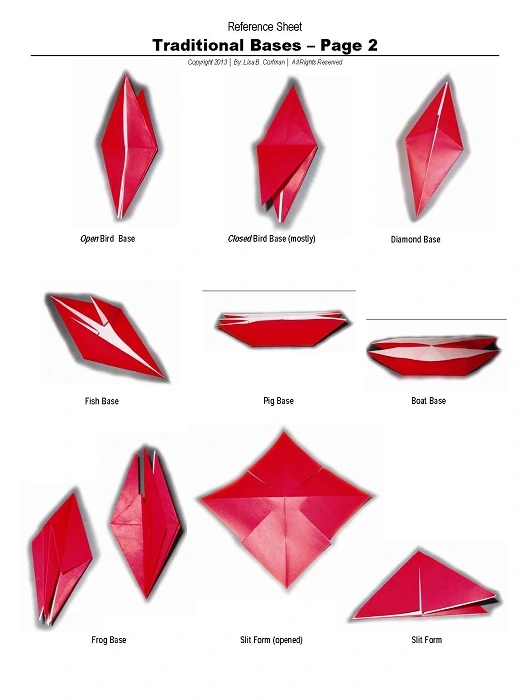Teaching Tactics
Some basic guidance for those that wish to teach origami. Learn the vocab but don’t rely on it!
Use Books, Get Permissions & Tips!
- Distributing photocopies of other person(s) publications is NOT okay, unless permission is granted from the origami designer(s) and/or copyright holder(s).
- Encourage students to buy or borrow books; NOT to steal instructions, aka, make copies from published books. I recommend Nick Robinson’s Origami Kit for Dummies; it teaches techniques origami technique from beginners to advanced readers, covering every topic imaginable! Open and print Lisa’s FREE base-to-make booklet for use and reference.
- Sometimes, there are difficult students. I wrote Origami Teaching Cures to bring positive attitudes. It’s a teaching guide to stop negativity for origami teachers, assistants, and advocates.
- Models can be pure or impure and a person who closely follows the rules of origami is termed a purist. Basically, a strict purist would not allow cuts, glue or other adhesives, nor the markings of writing utensils to be involved in the creation of a model. Most of our models are pure, but some do have creative impurities.
- The diagram uses a universal symbol-based language originated by the late origami master Akira Yoshizawa and by Samuel Randlett. Each diagram has images of the piece of paper and sequential-pictorial steps illustrating how to fold the final creation
- A handy paper-cutter, I use regularly and is perfect to use when teaching. Shai, from Origami Israel a created a free 3D printed one, that uses a standard #11 X-Acto (craft knife) blade. These blades can be bought relatively cheaply in packs of up to 100, so you’d never have to buy a new cutter again, just simply slide it apart and fit a new blade when required, just as you would with a regular Stanley Knife (box knife). Watch the paper cutter making YouTube demonstration and using these paper cutter’s 3D printing files.


